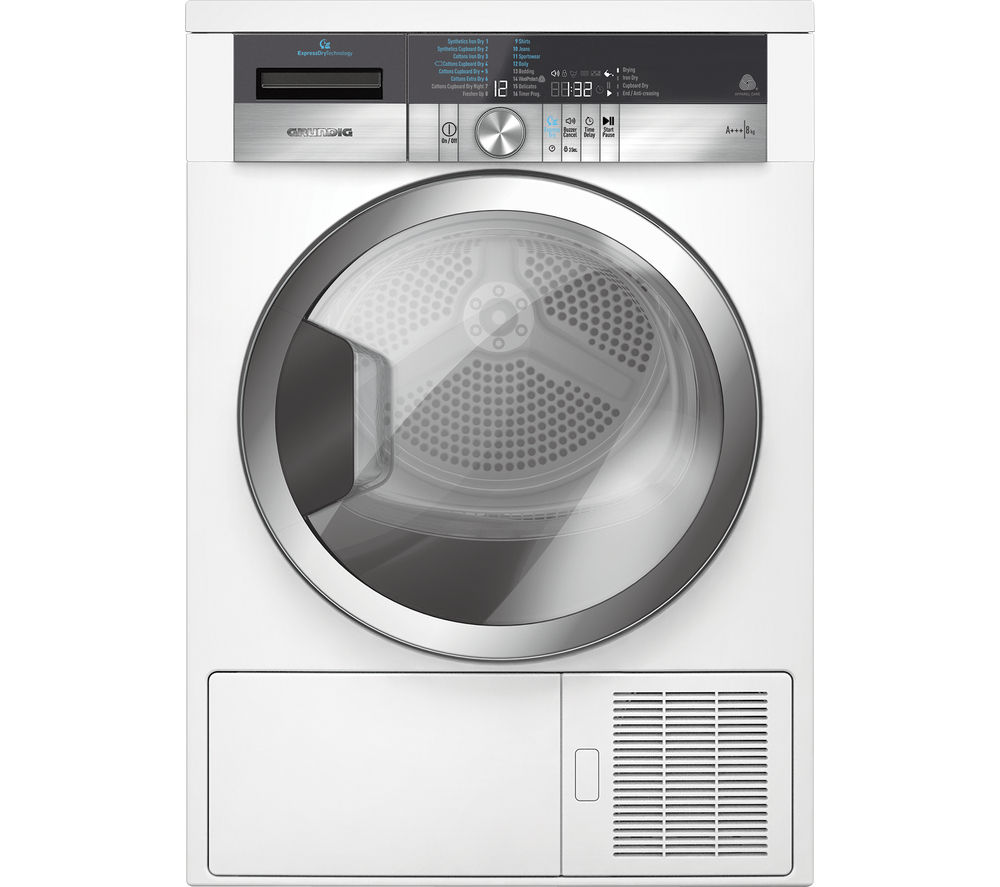GRUNDIG ExpressDry GTN38267GCW Heat Pump Tumble Dryer – White
Capacity: 8 kg. Energy rating: A+++. Sensor drying. Five-year manufacturer’s guarantee.
Top features:
– Large 8 kg capacity lets you complete your laundry in fewer loads
– Advanced heat pump technology offers efficient performance
– ExpressDry function reduces program duration for quick drying
Large 8 kg capacity
The ExpressDry GTN38267GCW has a large 8 kg capacity, making it an ideal for busy households. Complete your laundry in fewer loads, saving time and helping to reduce your energy bills.
An LCD digital display makes it easy to control the tumble dryer, whilst keeping you informed on the progress of each cycle. The tumble dryer benefits from a 5.3 litre water tank, meaning that you won’t have to empty the excess water as often to save time and energy.
Advanced heat pump technology
By using a relatively low temperature and advanced drum oscillation, the GTN38267GCW has an efficient and economical performance with an A+++ energy rating. Use the tumble dryer with confidence – special sensor programs detect moisture in the drum to prevent over drying.
ExpressDry function
The ExpressDry function allows you to finish drying your clothes quickly and efficiently, operating faster than condenser dryers while still maintaining high energy efficiency.
An automatic Anti-crease function helps to reduce creases until you’re ready to take the load out. It achieves this by periodically rotating the drum gently for up to two hours after the cycle has finished.
Additional information
| Colour | White |
|---|---|
| Manufacturer’s guarantee | 5 years |
| Drying capacity | 8 kg |
| Drying type | Heat pump |
| Annual energy consumption | 177 kWh |
| Energy consumption per cycle | 1.42 kWh |
| Power consumption | – Standby mode: 1 W |
| Drying time for a cotton cycle | – Full load: 152 minutes |
| Noise level | 66 dB(A) |
| Number of minutes on timer | 160 minutes |
| Special cycles | – Bedding |






by Rachel
Looks good, seems to work well. Not had it long and not had a tumble dryer before, so a bit early to say!
by Marcin
Is drying really fast, the longest cycle to dry really good i would say totally full load should be as it says 2h45minutes but in fact it takes about 1h20minutes, so super speed in my opinion. Has light inside, really easy to empty filters and water tank. It’s quite noisy to be honest, with this speed it’s not a problem at all. I have it stacked on my washing machine with universal stacking kit, looks good.
by Debra
This is my second pump dryer this one actually dries your clothes on the selected program.